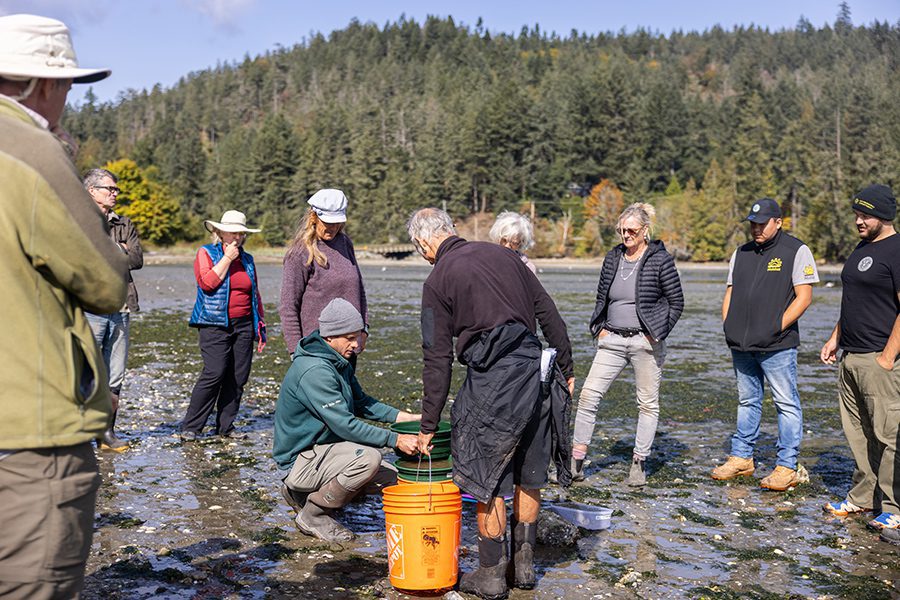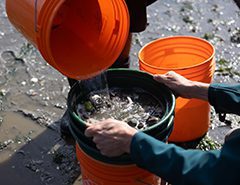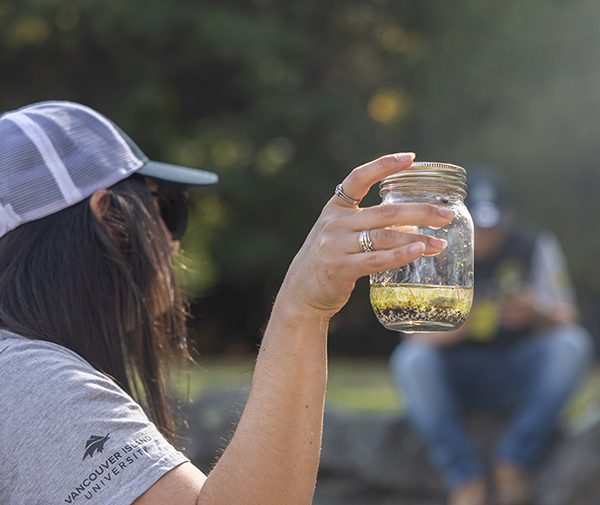
How do you find a tiny fish egg on a beach of sand? That’s what we learned on a sunny, warm September day on the shore of Drummond Park. Fifteen participants, including Gulf Islands National Park staff, First Nations, SSI Freshwater Catalogue volunteers and local residents, turned out to practice a sampling method that separates the near-invisible fish eggs from scoops of sand. Who are these forage fish laying eggs on sand? They are small (6-8”), silvery schooling fish with names like sand lance and surf smelt.
Small but mighty! because they hold a special place in the food chain by feeding all the marine species from salmon to whales and us humans too. Forage fish graze on plankton, the ultra-tiny plants and animals floating in the water column, converting this food source into their bodies as high-level protein and oils. Next time you walk across a beach around the Salish Sea, just think you might be walking on hundreds of minute transparent eggs stuck to grains of sand. Not to worry, though, as the eggs are tough enough to survive the grinding environment of sand roiled about by waves.
So why try to find the eggs? Once spawning areas are identified, then that habitat can be better protected. With suitable habitat, robust populations will feed the web of life in the Salish Sea. The sampling process seems complicated at first, with a variety of equipment – waterproof labels and data sheets to complete, a GPS unit, measuring tapes to lay out the sampling area, buckets and scoops to dig, sieves to screen large grains from small, a car battery to run a pump that swirls the sand in a slow vortex in a tub, spoons for stirring, and a glass jar to hold the final product – a condensed amount of water and sand with hopefully lots of fish eggs.


But we still can’t see any eggs in the jar?! That will be the task of our workshop presenter, Alana Vivani, from Mount Arrowsmith Biosphere Region Research Institute (MABRRI). She and her staff analyze the sample using a microscope.
Forage fish spawn in the winter months at high tide. Participants now trained will head out to various beaches monthly from November to February, collect samples of sand, process them and send them to MABRRI.
Interested in joining this citizen science project? Questions? Please get in touch with Alanna Vivani, MABRRI Project Coordinator or Anne Parkinson, Chair, Marine Stewardship TSS.
Photos: Alex Harris, Raincoast Conservation Foundation
